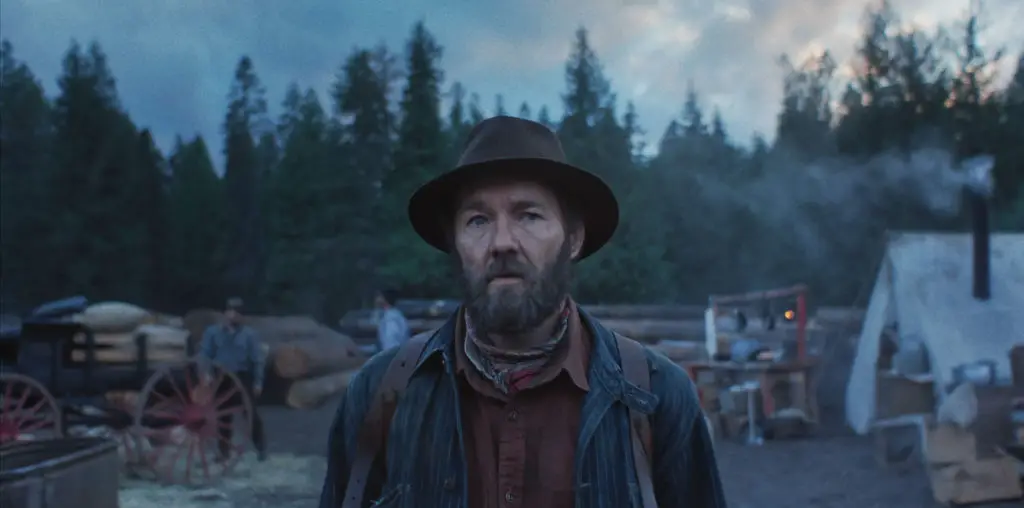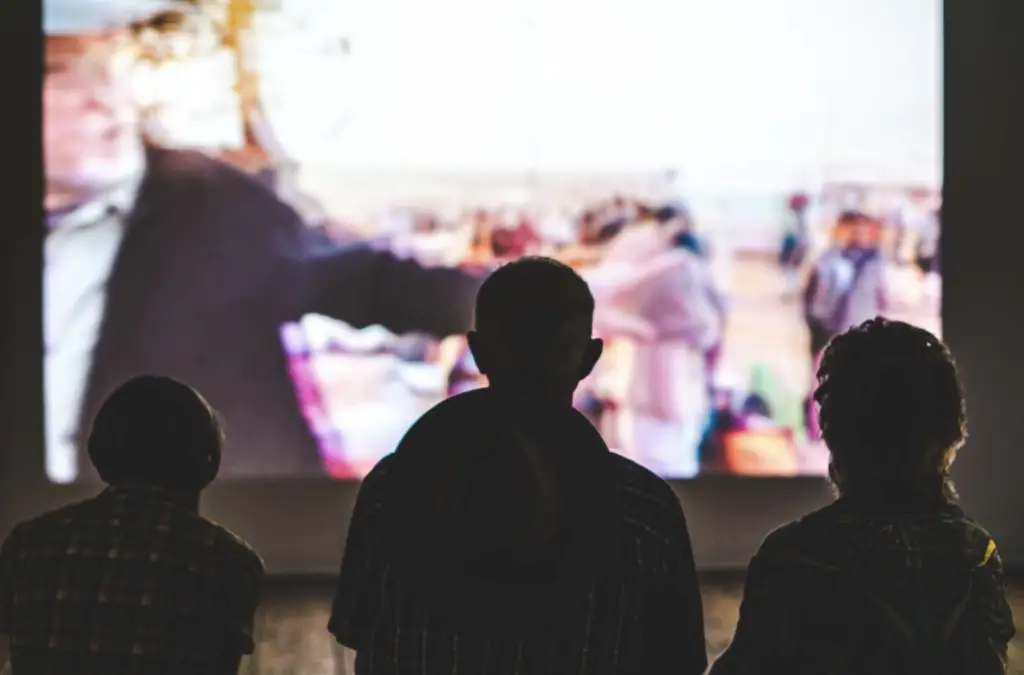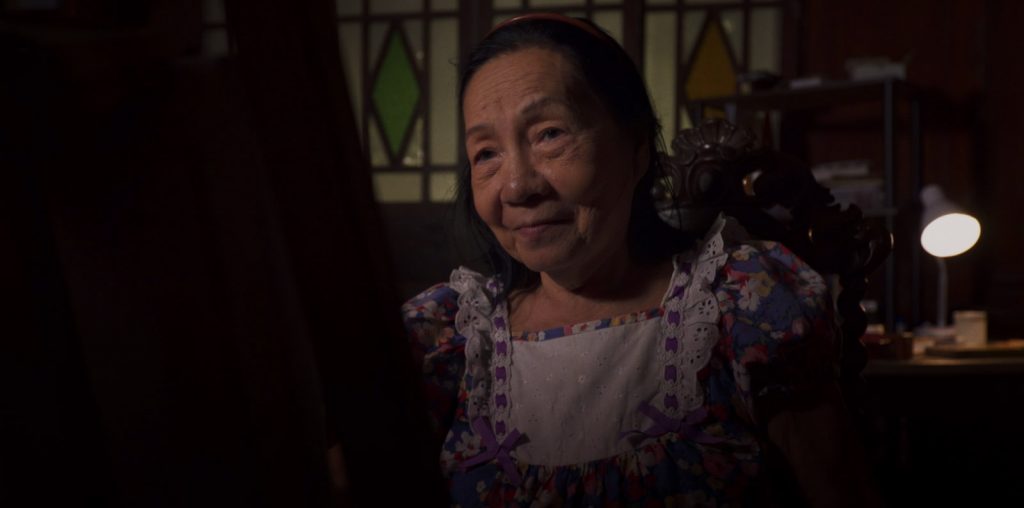
For filmmaker Larry Wessel, cinema has always been his “religion,” as he was raised by “two religious fanatics” whose church was the movie theatre. In fact, Wessel was named after his father’s favorite screen star, Laurence Olivier. It’s really no surprise then that the man who devoured Famous Monsters of Filmland and considers Francois Truffaut’s Hitchcock to be his Bible would start making films in 1968 at a mere 11 years old.
Wessel’s first project was The Black Glove, which he shot on a borrowed 8mm camera. The film, which sounds like a Dario Argento movie, is about the murder of an old man by a psychopath who wears black gloves and wields a knife. Wessel later bought a Kodak Super 8mm camera with money he saved from his paperboy job and at the age of 13 made a film called The Vulture Eye, which was based on Edgar Allan Poe’s The Tell-Tale Heart. “This film won me an Honorable Mention in a national film competition back then called the [Eastman] Kodak Teenage Movie Awards,” Wessel says. That wasn’t his only film based on a short story, either. Three years later he made A Perfect Day for Bananafish, based on a story by J.D. Salinger. Ambitious? Yes, but that ambition earned him four scholarships to film school at the University of Southern California.
“I learned nothing about cinema that I didn’t already know,” Wessel states about this time in college. “My classmates were the nephew of Roger Corman and the sons of Norman Jewison and Judith Krantz. A cinema professor there proclaimed that I had moral problems when I mentioned that I wanted to direct horror films and that my favorite films were Psycho and The Texas Chainsaw Massacre.” It was that criticism and more that led Wessel to believe there was a “conspiracy to kill [his] creative spirit” and caused him to leave the school after three years.
1994 saw the release of his notorious and critically-acclaimed movie, Larry Wessel’s Taurobolium, The Tijuana Bullfight Documentary. “I spent four years (1990-1994) going to every bullfight in Tijuana, Mexico,” Wessel says. “It took me a year to edit the 200 plus hours of footage. The end result is what a lot of people refer to as the best documentary on the subject of bullfighting ever made.” This film ultimately led to his current feature, Iconoclast, a documentary about Boyd Rice. Before that was released, however, there were quite a few other films that saw the light of day.
There was Sugar and Spice, a documentary that dealt with transsexuals, drag queens and transvestites; Ultramegalopolis; Tattoo Deluxe; Carny Talk; Sex, Death and the Hollywood Mystique; Song Demo for a Helen Keller World; and Hollywood Head Bash featuring live performances from The Mentors. Then came Iconoclast.
The film is a look at the life of Boyd Rice, a man whom some would call infamous. Truth be told, there are few who fit the definition of the movie’s title better than he. He is a writer, prankster, musician and actor. He’s also researcher who has delved into the occult, fascism, Social Darwinism, Charles Manson, Anton LaVey and the Church of Satan, Tiki culture and more. His legacy will be one of inspiration and confusion, and he leaves a trail of controversy whichever direction he takes. Wessel found the idea of doing a documentary on him to be almost “inevitable.”
“Anton LaVey [founder of the Church of Satan] was a big promoter of my Taurobolium,” Wessel says. “Over the years several people have told me that on their first visit with LaVey he would require them to watch [it] with him!” In 1997 Wessel found out that Rice’s band, NON, was opening for Death in June at the El Rey. He went to the show and met Rice for the first time. “He had been banned from performing there due to the actions of a small group of protestors who showed up outside the theater with picket signs. Boyd’s first words to me were that he loved Taurobolium and that Anton LaVey had screened it for him at The Church of Satan!” A friendship of sorts formed, and in 2000 Wessel went to Boulder, CO for a seminar and ended up shooting Rice for a documentary on collectors.
“He met me at my hotel,” Wessel recalls, “and from there we drove to Casa Bonita where we not only enjoyed a few beers and some Mexican food, but I was privileged to witness a man in a gorilla costume ripping the clothes off a teenage beauty queen and then pushing her off a 30 foot tall indoor waterfall into a black lagoon below! While watching this ape commit rape I asked Boyd if he would like me to do a documentary about him. He wasn’t keen on the idea at this point, but I think I planted the seed.” Two years later the director filmed NON at the Key Club and then in 2004, before NON played the Key Club again, he received an e-mail from Rice praising the bullfighting documentary and asking Wessel if he wanted to do the documentary. The rest, as they say, is history.
![]() The film takes place over three DVDs, with each disc focusing on different cities Rice has called home over the years. With such an extensive project, and with so many different aspects of Rice’s life that could be delved into, one wonders how Wessel even decided where he wanted to begin.
The film takes place over three DVDs, with each disc focusing on different cities Rice has called home over the years. With such an extensive project, and with so many different aspects of Rice’s life that could be delved into, one wonders how Wessel even decided where he wanted to begin.
“I was off to a great start,” he says, “having shot both Key Club performances. The second Key Club performance featured a return engagement not only for Death in June and NON, but for the same protestors I had encountered in 1997 at the El Rey. This time, however, I had the unique opportunity to capture them with my digital camcorder debating Boyd in front of the club in the heart of the Sunset Strip!” He then spent the next six years travelling to various cities to interview Rice and his friends. Second units filmed in Boston, Portugal, Belgium and Australia, leading to over 200 hours of footage. “My next step was to find the story in all that footage.”
Despite all that access to Rice and his friends, there were things Wessel wasn’t allowed to delve into. “When I showed up in Denver,” Wessel explains, “to shoot the first round of interviews with Boyd, I had a list of all the people that I wanted to interview. The first three people on this list were his mother (Mary Roland Rice), Lisa Carver and Michael Moynihan. When I mentioned these people to Boyd his response to each one was, ‘Absolutely not.’” Carver (a.k.a. Lisa Suckdog) is a writer and musician who has been involved with Rice in the past, and Moynihan, also a writer and musician, also collaborated with Rice and once shared an apartment with him. Neither partnership apparently ended on good terms.
People also had their own reactions when they found out Wessel was doing a documentary on Rice. The most common question people asked? According to Wessel it was a stuttering, “Is he a N … N … N … Nazi?” It’s actually a common question, but one Wessel thinks has finally been answered. “I think that Iconoclast has finally put this awful ‘question’ to rest. I haven’t heard from anybody who after seeing [the film] has held onto this notion.” Beyond that question, people’s reactions to the film have been good.
“I keep reading the word ‘masterpiece’,” Wessel says, “and ‘the best documentary I have ever seen.’” In 2011, the Melbourne Underground Film Festival gave the director two awards for Iconoclast: Best Documentary and Best Director. Critics and fans aren’t the only ones enamored with the film. “[Rice] said that it exceeded his wildest expectations. He told me that he felt good about dying now that Iconoclast is how people will remember him!”
Of course, as with any film, there are moments that have to be left on the cutting room floor (or hard drive). This film, even at three DVDs, was no exception. In fact, what is missing could be another movie in its own right.
“There were sequences that I put together,” Wessel explains, “that had to be removed because they didn’t move the plot along. Some of these include the origin of the voice sampled in the tune “Cleanliness and Order,” Boyd’s Grail research (although this is mentioned briefly in a sequence about a dream he had where Jean Cocteau appears), a visit to the Unarius Academy of Science in El Cajon, a clever prank pulled on Denny’s restaurants, Boyd’s love for California Highway Patrol magazine, high school hijinks involving a giant paper mache penis constructed by Boyd, a meet and greet with fans at a book signing and many more that I can’t recall at the moment. There were also a few interviews with certain people that had to be scuttled.” One of those interviews was with director Richard Wolstencroft, who directed Rice in Pearls Before Swine.
“Richard thought out loud,” Wessel says, “that Rice’s importance in the future will be regarded alongside figures such as William Burroughs, Jack Kerouac and Allen Ginsberg, which I thought was a bit of a stretch. I had footage of Kim Fowley saying that Boyd Rice was the next Jesus Christ. Earlier in the film during Boyd’s introduction at M.I.T., Boyd’s self-proclamation about coming from the same bloodline as Jesus Christ had been mentioned, and I thought that it would be too much to underline this with Mr. Fowley’s comment so I got rid of that one. There were other interviews as well that didn’t make the final cut. That being said, there are 35 people (other than Boyd) who did make the final cut.”
Those people include Ray Dennis Steckler, Coop, Gidget Gein, Rozz Williams, Douglas P., Adam Parfrey, Rodney Bingenheimer, Blanche Barton, Stanton LaVey and many more.
So will there be a second film? Nope. Wessel says, “I can think of at least three people that could pick up where Iconoclast leaves off: Lisa Carver, Michael Moynihan and Giddle Partridge, but don’t hold your breath.”
With Rice’s reputation and the protests that have sprung up where NON is set to perform, one would think that finding places to screen the movie would prove difficult. Nothing could be further from the truth. Wessel says, “Getting screenings has been a cake walk. Iconoclast had its sold-out red carpet world premiere at Quentin Tarantino’s New Beverly Cinema in Los Angeles; followed by screenings at the Roxie Theater in San Francisco; Anthology Film Archives in New York City … [and more].” Additional screenings are in the planning stages. “So far people have enjoyed seeing [my film] at cinemas all over the world. I am a lucky man.”
This lucky man isn’t stopping with his latest documentary, either. “My new passion,” Wessel explains, “is for animation, and I’ve taken to it like a duck to water. [Also] be on the lookout for a feature-length horror film directed by yours truly.” If Iconoclast is any indication of what he is capable of, it is probably safe to say that anything from him is going to be interesting … and perhaps more than a bit controversial.
Information on Wessel and his works can be found at www.wesselmania.net. Mute is planning on releasing a 90 minute version of Iconoclast, and information on his latest movie, Love, can be found at www.lovethemovie.org/. You can also read the Film Threat review of Love at www.filmthreat.com/reviews/75806/.



Hey Doug, over 20 years ago you made a review about the movie dick baby, my dad was a extra in it and never got to see it get greenlit, he and his group of friends traveled around Southern California being extras in the film. As a gift I wanna show him the movie, how did you get your hands on it and where could I watch it?